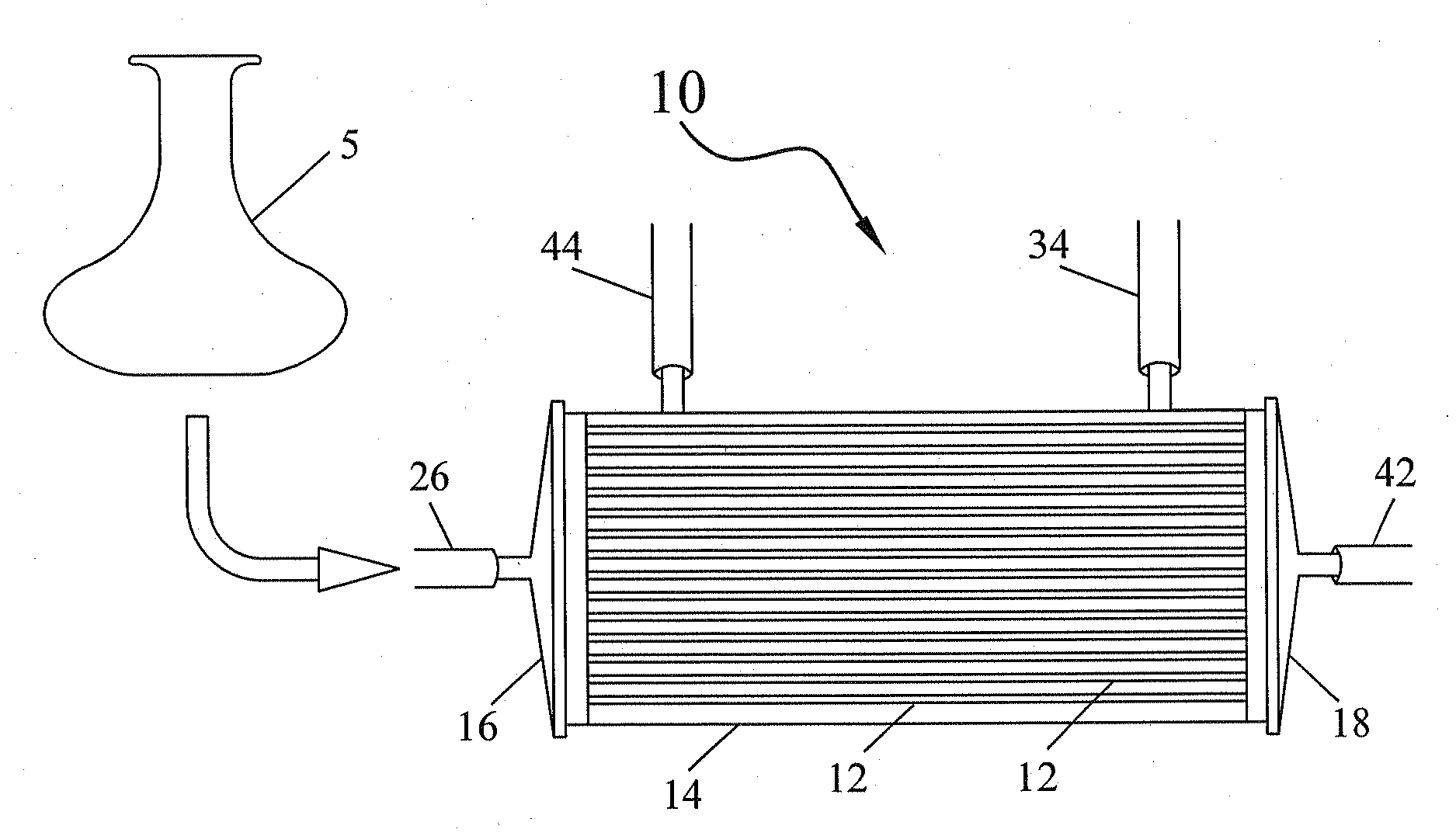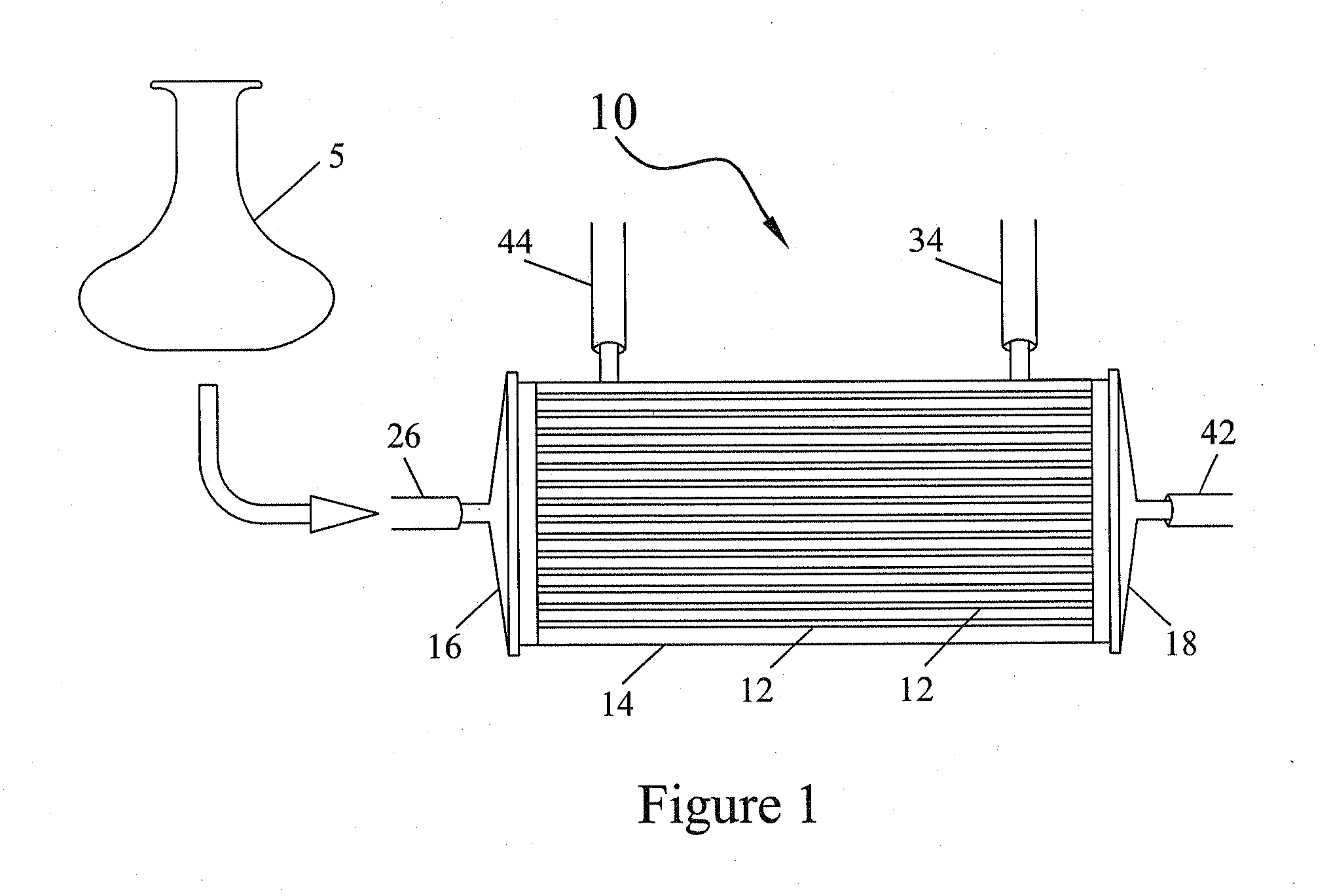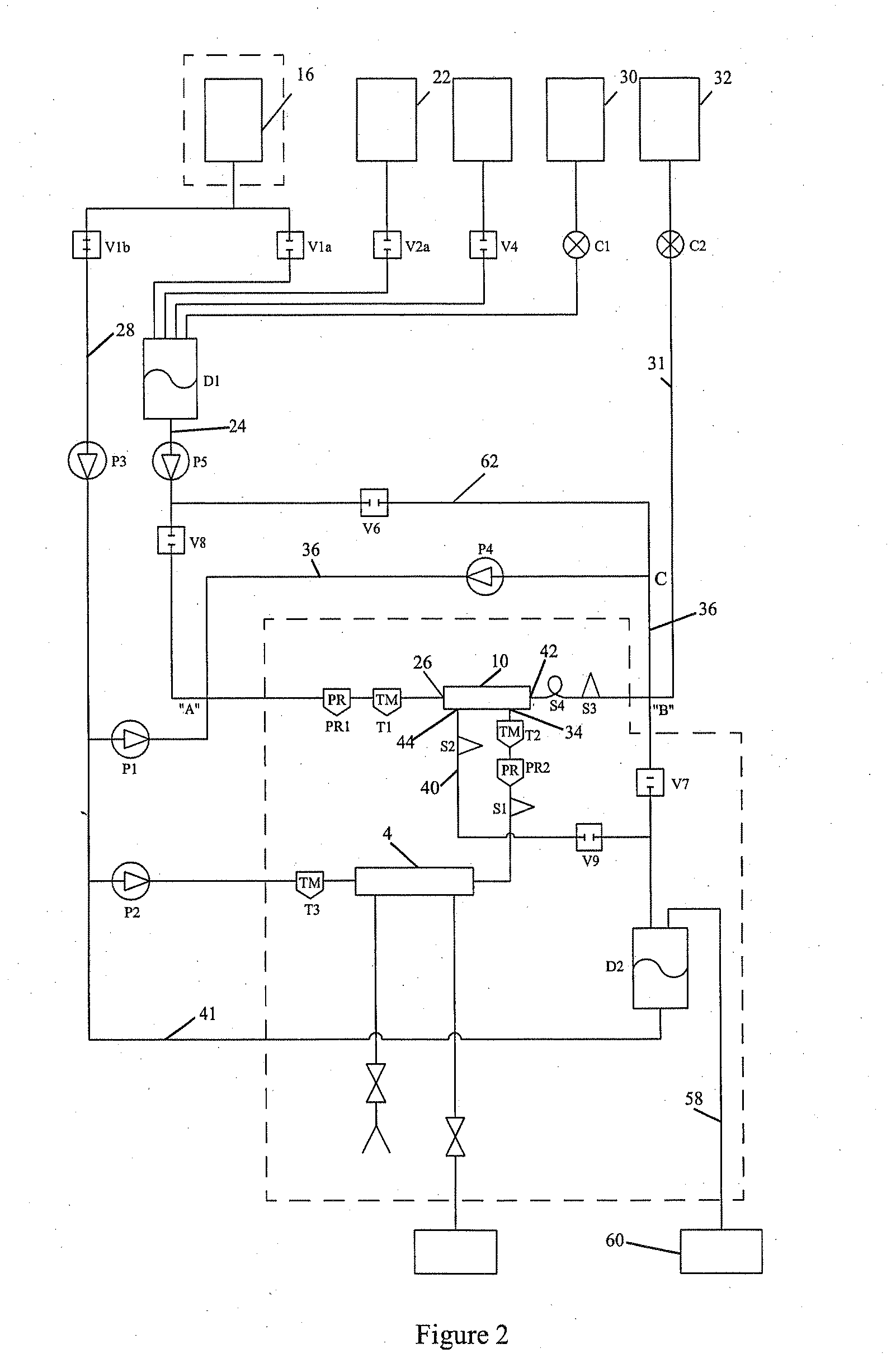Bioreactor Surfaces
a technology of bioreactors and surfaces, applied in biomass after-treatment, biochemical apparatus and processes, specific use of bioreactors/fermenters, etc., can solve the problems of high contamination risk, impracticality of methods, and reduced viability and proliferative capacity of mammalian cells, so as to promote cell adhesion to the polymeric membrane surface and improve cell adhesion
- Summary
- Abstract
- Description
- Claims
- Application Information
AI Technical Summary
Benefits of technology
Problems solved by technology
Method used
Image
Examples
example 1
[0041]Three polyflux hollow fiber bioreactors were used in this example. One bioreactor-was not treated with anything (referred to in FIG. 3 as no FN). One bioreactor was treated with fibronectin (FN) and one was treated with platelet lysate (no FN+PL) according to the above-described methods. Around 3×106 mesenchymal stem cells were loaded into each bioreactor on day 0. The cells were grown for seven days. The EC and IC media was replaced on days three and five and the cells were harvested and counted on day seven.
[0042]As can be seen from FIG. 3, the bioreactors treated with either fibronectin (FN) or platelet lysate (PL) produced much better cell expansion than the untreated bioreactor. Increased cell numbers produced by the bioreactors with the treated fibers indicate that cells were able to attach to the membrane and grow.
example 2
[0043]Four polyflux hollow fiber bioreactors were used in this example. One bioreactor was treated with an amount of fibronectin (1× FN), one bioreactor was treated with twice the amount of fibronectin (2× FN), one bioreactor was treated with platelet lysate and one was treated with plasma according to the above-described methods. Around 3×106 mesenchymal stem cells were loaded into each bioreactor on day 0. The cells were grown for seven days. The EC and IC media was replaced on days three and five and the cells were harvested and counted on day seven.
[0044]As can be seen from FIG. 4, the bioreactors treated with either 1× or 2× fibronectin produced the highest cell expansion. However, cells grown on membranes treated with platelet lysate and plasma also showed good expansion in culture.
PUM
| Property | Measurement | Unit |
|---|---|---|
| length | aaaaa | aaaaa |
| concentration | aaaaa | aaaaa |
| hydrophobic | aaaaa | aaaaa |
Abstract
Description
Claims
Application Information
 Login to View More
Login to View More - R&D
- Intellectual Property
- Life Sciences
- Materials
- Tech Scout
- Unparalleled Data Quality
- Higher Quality Content
- 60% Fewer Hallucinations
Browse by: Latest US Patents, China's latest patents, Technical Efficacy Thesaurus, Application Domain, Technology Topic, Popular Technical Reports.
© 2025 PatSnap. All rights reserved.Legal|Privacy policy|Modern Slavery Act Transparency Statement|Sitemap|About US| Contact US: help@patsnap.com



